The 1970s were a simpler time when “safety first” wasn’t even in our vocabulary, and helicopter parenting was something that only happened in war movies. Kids roamed free, playground equipment was basically medieval torture devices painted bright colors, and parents sent us outside with a simple instruction: “Be back when the streetlights come on.” Looking back, it’s amazing any of us survived to tell these tales, but somehow we did – and we had a blast doing it.
1. Riding in the Back of Pickup Trucks Like Human Cargo
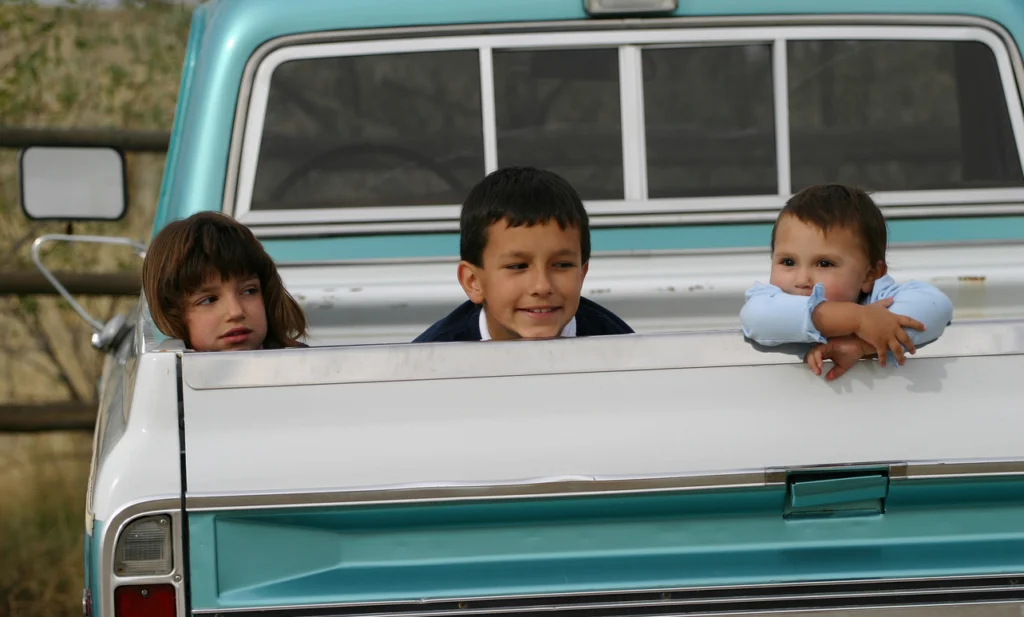
Nothing said “weekend adventure” quite like piling into the bed of someone’s pickup truck with nothing but the tailgate between you and the asphalt. Parents would load up six or eight kids back there like we were bags of mulch, and off we’d go to the beach, the lake, or just cruising around town. The faster the driver took those curves, the more we’d slide around back there, laughing and holding on for dear life as we watched the world rush by at 45 miles per hour.
The pickup truck bed was the ultimate mobile playground where you could lie flat and watch the clouds go by or sit up and wave at other cars like you were riding in a parade. Wind whipped through your hair, bugs splattered on your face, and if you were really lucky, you might catch a grasshopper or two during the ride. The only safety equipment was common sense and a good grip, and somehow that seemed like more than enough protection for our adventures.
2. Metal Slides That Could Fry an Egg (And Your Legs)

Those towering metal slides at the playground were basically solar ovens disguised as playground equipment, reaching temperatures that could brand cattle on a sunny summer day. You’d climb up that burning hot ladder, your hands practically sizzling on each rung, then sit down on a slide surface that was roughly the temperature of a frying pan. The resulting ride down was a high-speed race between gravity and third-degree burns, with your shorts providing about as much protection as tissue paper.
The smart kids would test the slide with their hand first, pulling it back quickly with a sharp intake of breath before deciding whether the ride was worth the risk. But more often than not, we’d just grit our teeth and go for it, emerging at the bottom with red marks on our legs that looked like we’d been branded by the playground gods. The worst part was that metal slide in direct sunlight – it was like riding down a lightning bolt made of molten steel.
3. Lawn Darts: Backyard Javelin Competition
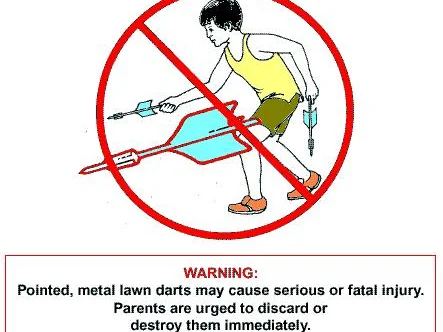
Lawn Darts were essentially medieval weapons marketed as family fun, featuring heavy metal tips designed to stick into the ground with the force of a small harpoon. The goal was to toss these weighted projectiles across the yard and land them in a plastic ring, which sounds innocent enough until you realize you were basically playing catch with spears. Somehow, the fact that they were sold in the toy section made them seem perfectly safe for backyard barbecues and family gatherings.
The real danger came when someone inevitably suggested making the game “more challenging” by increasing the distance or adding obstacles like trees, lawn furniture, or younger siblings. Those metal tips could penetrate just about anything – grass, dirt, wooden decks, or heaven forbid, anything softer than that. It’s a miracle that more family reunions didn’t end with trips to the emergency room, but back then, we just called it “building character.”
4. Chemistry Sets That Could Level a City Block
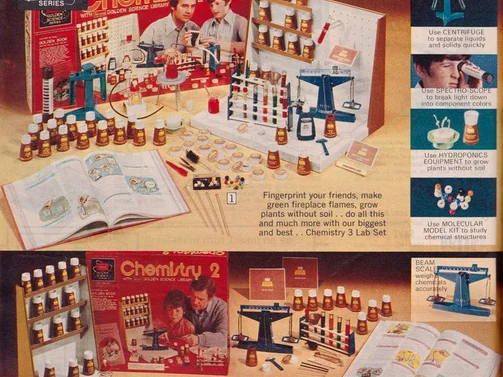
The chemistry sets of the ’70s weren’t the watered-down, safety-approved versions kids get today – they were legitimate laboratory equipment complete with real chemicals that could burn, explode, or create toxic gases. These sets came with glass test tubes, Bunsen burners, and chemicals with names you couldn’t pronounce but were pretty sure could dissolve metal. The instruction booklet was more like a recipe book for controlled explosions, and somehow parents thought this was perfectly appropriate for unsupervised basement experimentation.
The real fun began when you started mixing chemicals that weren’t supposed to go together, creating reactions that would send you running for fresh air and wondering if you’d accidentally invented a new form of chemical warfare. Those little bottles of mysterious powders and liquids were like a mad scientist’s starter kit, complete with the potential to create smoke, fire, or substances that could eat through the basement floor. The fact that these were sold as educational toys shows just how different our definition of “safe learning” was back then.
5. Trampolines Without Safety Nets
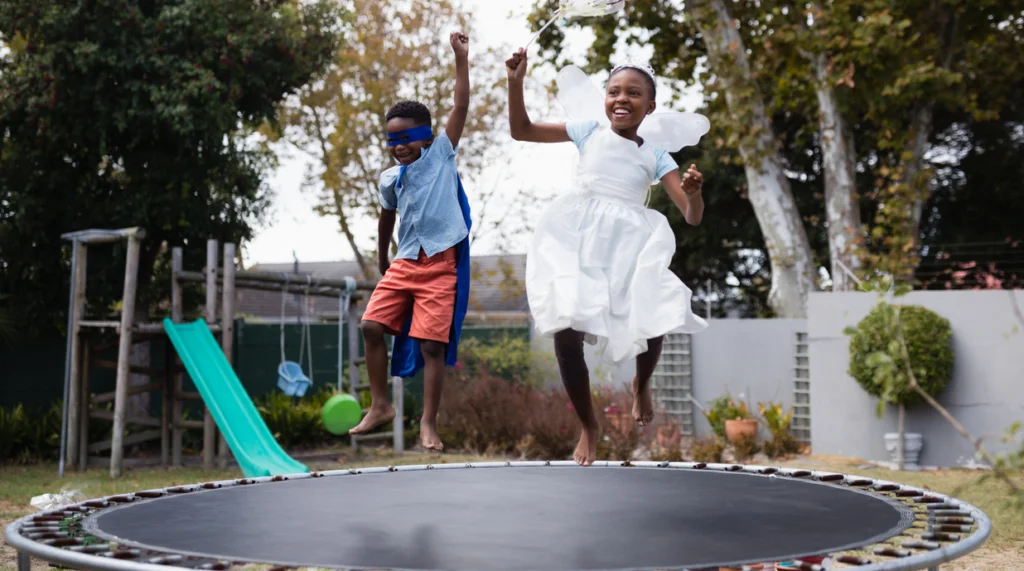
The backyard trampoline was a 15-foot circle of potential disaster, with nothing but a thin layer of canvas between you and a date with the orthopedic surgeon. These weren’t the safety-conscious trampolines of today with their protective nets and padded springs – they were basically launching pads surrounded by exposed metal springs that could pinch, cut, or catapult you into the neighbor’s yard. The goal was always to see who could bounce the highest, and the inevitable result was someone getting launched off the side like a human cannonball.
The most popular games involved multiple people bouncing at once, creating a chaotic physics experiment where the smallest kid would get launched into orbit every time someone bigger landed near them. “Double bouncing” was an art form that required precise timing and a complete disregard for personal safety, sending victims flying so high they could practically see their house from space. The springs around the edge were like a ring of mousetraps waiting to snap on unsuspecting ankles, but somehow that just added to the excitement.
6. Three-Wheeled ATVs: The Tipping Point of Fun
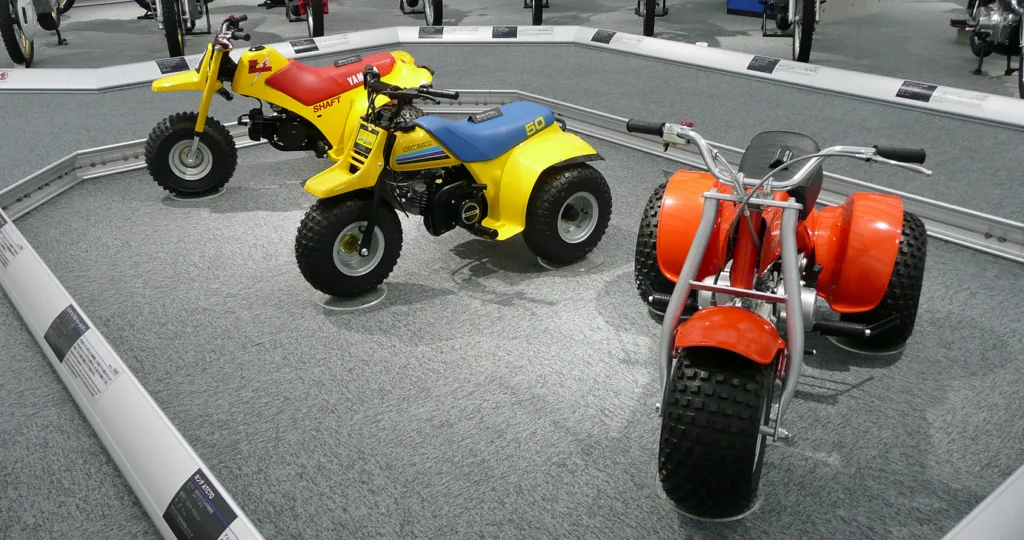
All-Terrain Vehicles in the ’70s came with three wheels and a center of gravity that made them about as stable as a drunk giraffe on roller skates. These mechanical bulls were designed to tip over at the slightest provocation, turning every ride into a high-stakes balancing act where the penalty for failure was getting pinned under 400 pounds of steel and plastic. The faster you went, the more likely you were to experience an unplanned dismount, but that just made it more thrilling.
The three-wheel design meant that taking any turn at speed was like playing Russian roulette with physics, never knowing if you’d make it around the corner or end up doing an impromptu somersault with your ATV as a very heavy partner. The handlebars had a tendency to jerk out of your grip when you hit a bump, sending you careening off in whatever direction the machine felt like going. But the adrenaline rush of staying upright while bouncing across rough terrain at breakneck speed was absolutely addictive, even if it came with a high probability of ending up as a pancake.
7. Slip ‘N Slides on Hills That Defied Physics
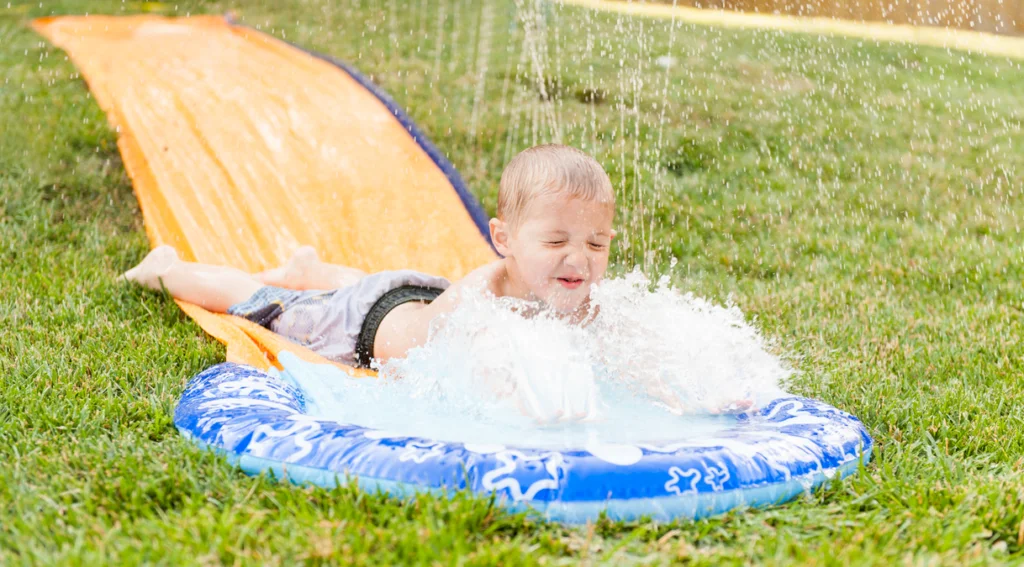
The Slip ‘N Slide was supposed to be a gentle water slide for the backyard, but somehow we always ended up setting it up on hills that would make a ski jumper think twice. The steeper the incline, the more fun it was, even though basic physics suggested that launching yourself down a wet plastic sheet at high speed might not end well. Add a running start, and you were basically turning yourself into a human torpedo with very limited steering capabilities and no brakes.
The real danger came from what was at the end of the slide – rocks, trees, fences, or just the abrupt transition from slippery plastic to dry grass that could send you tumbling like a rag doll. The plastic would develop rips and tears that created perfect traps for elbows and knees, turning a fun slide into an impromptu cheese grater experience. But the thrill of that initial launch, flying down the hill with water spraying everywhere, made all the scrapes and bruises seem like a small price to pay for those few seconds of pure exhilaration.
8. Playground Merry-Go-Rounds: Centrifugal Force Torture Devices
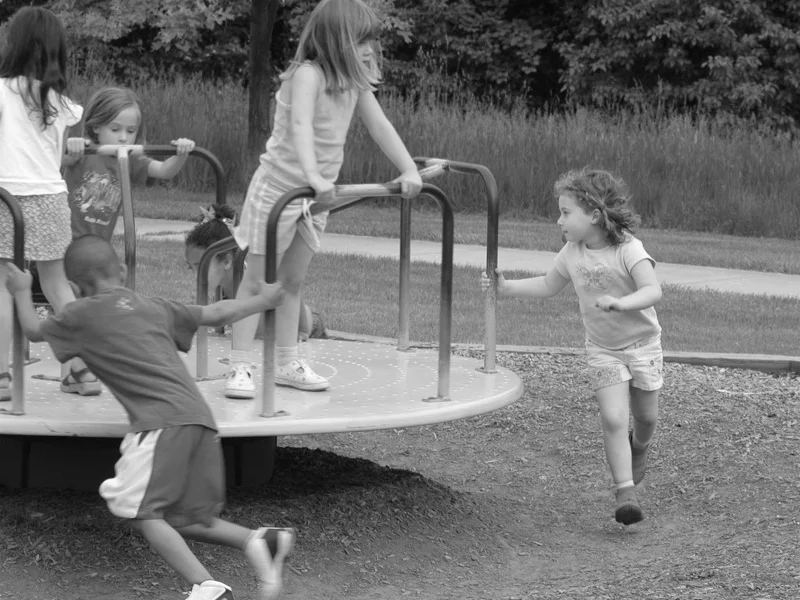
The playground merry-go-round was essentially a medieval torture device disguised as children’s entertainment, capable of generating enough centrifugal force to launch kids into neighboring counties. The goal was always to get it spinning as fast as humanly possible, with some poor soul clinging to the bars while others pushed from the outside like they were trying to break the sound barrier. The faster it went, the harder it became to hold on, creating a terrifying game of survival where letting go meant being flung across the playground like a human projectile.
The real test of courage was jumping on while it was already spinning at maximum velocity, timing your leap to land on the moving platform without getting clotheslined by the support bars. Once you were on, the world became a blurry kaleidoscope of colors and motion, with the ground rushing by so fast it made you dizzy just looking at it. Getting off was an art form that required perfect timing and a willingness to hit the ground running at speeds that would make a cheetah jealous, often resulting in a spectacular tumbling dismount that looked like something from a stunt show.
9. Wood-Burning Kits in Unsupervised Hands
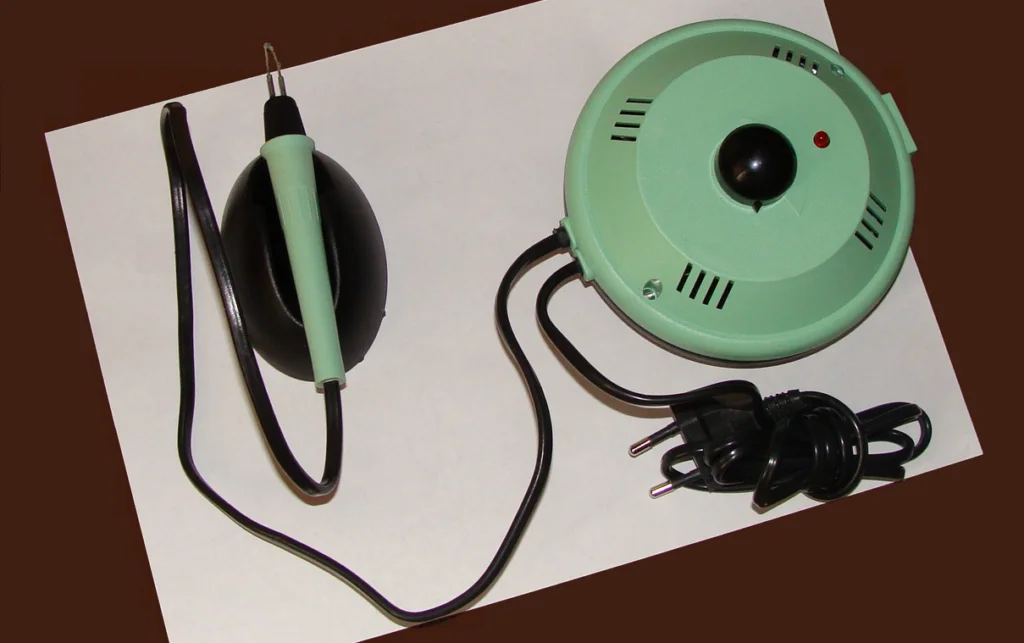
Wood-burning kits were essentially miniature branding irons marketed to children, complete with electric heating elements that could reach temperatures hot enough to sear flesh or start fires. These craft sets came with metal tips that glowed red-hot and could burn through wood, leather, or skin with equal efficiency, yet somehow they were considered appropriate gifts for kids who could barely tie their own shoes. The instruction booklet would cheerfully suggest “adult supervision,” but in practice, we were usually left alone in the basement with these potential fire hazards.
The real danger wasn’t just the obvious risk of burns – though those were certainly common – but the fact that these tools could easily start fires if left unattended or used near flammable materials. The heating element would stay hot for minutes after being unplugged, creating a hidden danger that caught many unsuspecting fingers off guard. Plus, the toxic fumes created by burning wood and other materials in poorly ventilated spaces probably weren’t doing our developing lungs any favors, but back then, if you could still breathe, it was considered safe enough.
10. Banana Seat Bikes with No Brakes (Literally)
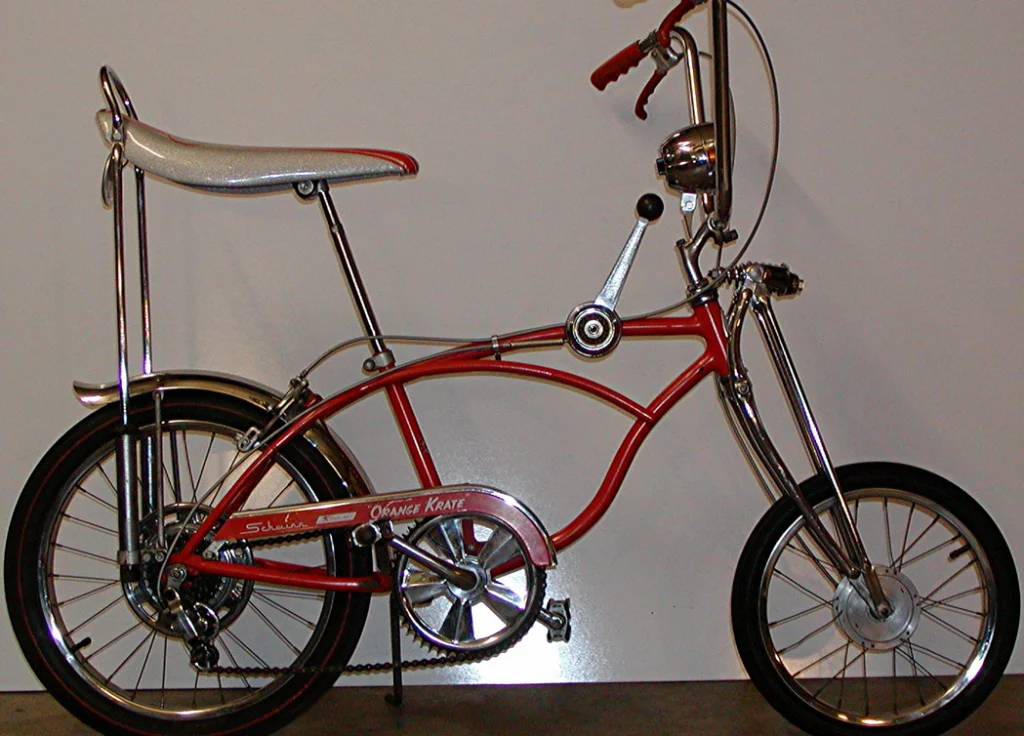
The coolest bikes of the ’70s were those high-rise banana seat cruisers with handlebars that reached toward the sky and a braking system that was more suggestion than actual stopping power. These bikes were designed for style over safety, with coaster brakes that required you to pedal backward to stop – a system that worked great until you were flying down a hill and suddenly realized you needed to stop immediately. The long, cushioned seat was perfect for carrying passengers, turning every ride into a two-person adventure with double the potential for disaster.
The high-rise handlebars looked cool but created a riding position that was about as aerodynamic as a parachute, making it nearly impossible to maintain control in windy conditions or at high speeds. The banana seat was slippery when wet, and the lack of proper hand brakes meant that emergency stops involved either dragging your feet like Fred Flintstone or hoping you could find a soft bush to crash into. But the style points were undeniable, and somehow looking cool while careening out of control seemed like a fair trade-off.
11. Swimming in Quarries, Ponds, and Other Natural Death Traps
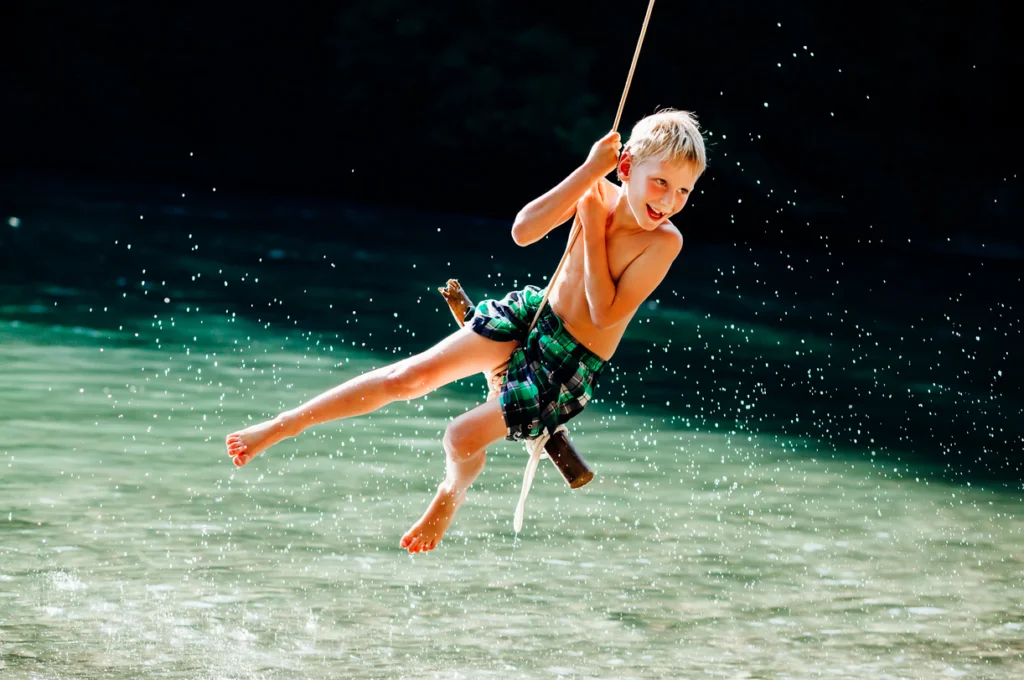
Before community pools became common, we swam wherever we could find water deep enough to jump into, regardless of what might be lurking beneath the surface. Old quarries filled with murky water of unknown depth became our swimming holes, complete with submerged machinery, jagged rocks, and water so cold it could stop your heart. The local pond was another favorite, despite the fact that it was probably home to snapping turtles, water moccasins, and bacteria that could cause infections that modern medicine was still trying to name.
The thrill was in the unknown – you never knew how deep the water was until you jumped, and by then it was too late to reconsider your decision. Quarries were particularly dangerous because the water was often deceptively deep and extremely cold even in summer, creating perfect conditions for hypothermia or worse. But the adventure of exploring these natural swimming holes, swinging from ropes tied to overhanging branches, and diving off cliffs into water of questionable quality was irresistible to kids who had grown up thinking danger was just another word for fun.
12. Firecrackers and Homemade Explosives

The Fourth of July wasn’t complete without a healthy supply of firecrackers, cherry bombs, and other small explosives that could blow your fingers off faster than you could say “bottle rocket.” These weren’t the tame sparklers and snakes of today – they were legitimate explosives that could shatter glass, blow holes in metal cans, or remove digits if you weren’t careful with the timing. The bigger the bang, the better the firecracker, and somehow parents trusted us to handle these miniature bombs with the maturity and wisdom of seasoned demolition experts.
The real creativity came in finding new and increasingly dangerous ways to set them off – in mailboxes, under tin cans, or taped to model airplanes for the ultimate explosive finale. M-80s were the holy grail of backyard pyrotechnics, containing enough explosive power to seriously injure someone, yet they were sold to kids like candy. The fact that we still have all our fingers and haven’t blown up the neighborhood is a testament to either incredible luck or the protective power of youthful ignorance.
13. Unsupervised Adventures in Construction Sites

Nothing said “playground” quite like an active construction site, complete with heavy machinery, exposed rebar, and holes deep enough to disappear into. These sites were like adventure parks for kids, offering everything from tall cranes to climb to concrete pipes big enough to crawl through. The fact that they were clearly marked with “No Trespassing” signs just made them more appealing, and somehow parents never seemed too concerned about where exactly we were playing as long as we showed up for dinner.
Construction sites offered endless possibilities for dangerous fun – walking on narrow beams high above the ground, playing hide-and-seek among stacks of building materials, or pretending to operate heavy machinery that could crush a small car. The partially built structures were like jungle gyms designed by engineers who had never heard of safety codes, complete with exposed electrical wiring, unsecured ladders, and foundation holes that could swallow a child whole. But the thrill of exploring these forbidden zones, pretending to be construction workers or daredevil stunt performers, was worth the risk of ending up as a cautionary tale in the local newspaper.
Looking back at these death-defying adventures, it’s amazing that an entire generation survived to adulthood with all their limbs intact. But somehow, those risky experiences taught us resilience, creativity, and a healthy respect for our own mortality that you just can’t get from video games and supervised playdates. We learned to assess risks, make quick decisions, and deal with the consequences of our choices – life skills that served us well long after we outgrew the urge to launch ourselves off homemade ramps or swim in questionable bodies of water. The ’70s may have been dangerous, but they sure knew how to make childhood an adventure worth remembering.
This story 13 Times You Risked Your Life Just Trying to Have Fun in the ’70s (And Nobody Batted an Eye) was first published on Takes Me Back.


